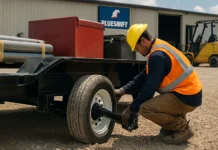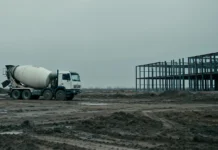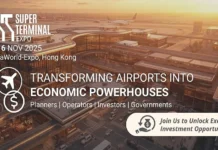In the construction industry, all resources are calculated with precision, and project managers understand the importance of minimizing delay. Some interruptions may seem inconsequential at first.
However, projects have interconnected tasks that can snowball into longer, drawn-out periods of downtime. It’s critical to recognize why and to avoid it at all costs.
How Drawn-Out Downtime Affects Construction Companies
Construction companies can experience the impact of drawn-out downtime in a variety of ways, from their project budget to operational speed to industry reputation. Here are some key factors to consider.
1. Increases Financial Expenses
Drawn-out downtime can increase costs, as businesses still need to pay for labor and equipment even while the project is at a standstill. Costly maintenance or repairs during downtime can also consume more of the budget.
These financial increases can be draining for small businesses or projects with a smaller budget. The lack of funds can also prevent them from making necessary changes to address unexpected challenges.
2. Disrupts Operations
Time is money, and a delay can slow operations and build up a bottleneck. Companies would have to reallocate people to certain tasks or move equipment to areas where it wasn’t scheduled to be.
Such disruptions confuse contractors and potentially harm morale, distracting them from properly fulfilling the project. If these translate into mistakes, the team must allocate additional resources to rework the problem.
3. Creates Client Dissatisfaction
Construction teams should relay any project progress to their clientele. Unfortunately, reporting that there has been downtime can cause backlash and build up tension. Long-term delays may even cause these relationships to sever in the long run.
There’s also the matter of reporting the downtime to partnered suppliers and subcontractors. Learning about these issues can cause hitches in their own business schedule and influence their coordination in the future.
4. Misses Deadlines
Project deadlines are important to meet, especially for critical infrastructure projects like communications networks or transportation pathways. Unfortunately, drawn-out downtime can cause the company to miss milestones or even submit outputs late.
Certain cases may lead to financial penalties or even legal consequences due to a breach of contract. Employers who will file claims can have the damages of the downtime liquidated.
5. Lowers Business Reputation
While missed deadlines may seem like the ultimate impact of drawn-out downtime, businesses may also miss opportunities. After all, breaching a contract can give the impression that a construction team is unreliable or unable to adapt to these circumstances.
Any previous client relationships or even supplier partnerships may look to other competitors for their services instead. At the same time, the affected business would make it hard to build up its client base.
Strategies to Minimize Drawn-Out Downtime
Downtime can create negative ripples across the construction company and its projects, making it imperative to tackle it as soon as possible. Here are some insights on strategies to help businesses avoid and curb downtime, along with provider suggestions.
1. Emergency Fuel Solutions — Foster Fuels
Power outages can occur when least expected, causing unimaginable delays on-site. Certain areas of the country are more vulnerable to harsh weather than others, which can also limit their access to equipment and vehicle fuels.
Foster Fuels has over 100 years of fuel operations expertise to help construction companies stay operational. It can help companies deploy diesel-fueled generators to turn on lights and heaters on-site and power up key equipment.
Foster Fuels ensures the best fueling options for heavy-duty equipment, skid tanks, storage tanks, trucks and more. It has experience working with residential and commercial construction and can provide same-day fuel delivery.
2. Equipment Reliability — United Rentals
Industrial-grade equipment that can last throughout the project is crucial. Whether a project wants to rent or purchase the machinery, it should be functional enough not to break down in the middle of operations.
United Rentals has been serving construction and industrial customers by providing approximately 4,800 equipment classes for rent. It also serves information on increasing project uptime through worksite performance and productivity.
The Rental Protection Plan provides coverage for accidental damage, protecting renters’ funds. Meanwhile, buyers are provided with flexible financing solutions. The application process is simple, with quick approvals and same-day POs.
3. Construction Staffing — PeopleReady
Another common reason for drawn-out downtime is a labor shortage in construction companies. Some contractors may leave in the middle of their contract, though there are also cases where a project is simply too big for a team to handle.
For over 30 years, PeopleReady has offered workforce solutions to contractors and subcontractors. It finds and connects companies with laborers and tradespeople of different skill levels to keep operations afloat.
Partnering with a construction staffing agency is an effective way of quickly acquiring the people a team needs. Its in-depth worker screening and safety training program ensures candidates are vetted and prepped for work.
4. Climate Control Solution — Sunbelt Rentals
The environmental conditions in which construction companies work can often influence their progress. It’s crucial to provide temporary heating, cooling and humidity control so workers can work comfortably throughout the day and meet deadlines.
Sunbelt Rentals is known for its equipment rental industry, but it also offers an expansive portfolio of turnkey services, including climate control solutions. It provides efficient HVAC equipment to mitigate temporary weather problems.
Aside from improving comfort, its advanced technology prioritizes safety within the construction community and promotes sustainable energy management. These solutions have been deployed in civil commercial construction and government projects.
5. Safety and Compliance Services — WSB
Safety and compliance services can help companies ensure that construction projects will continue operations. They prevent accidents and help prevent project disruptions that would have resulted in regulatory actions.
WSB has been building its technical expertise since 1995 to offer regulatory compliance, safety program development, employee training and more. It also has certified trainers who can deliver OSHA construction safety training to help employees be vigilant of hazards.
The company can assist companies on a project-by-project basis by conducting thorough site evaluations and recommending safety improvements. It also offers incident management and reporting services to speed up recording and workers’ compensation processing.
6. IT Support — The Scarlett Group
Technical failures and cyber threats can affect the administrative side of construction projects and inadvertently halt them. It’s vital to seek IT support that provides rapid response and recovery from those issues, and proactive monitoring for future disruptions.
The Scarlett Group is best known for simplifying and improving IT infrastructure to enable businesses to focus on their projects. It has helped architecture, engineering and construction firms with their technology needs.
Additional support services are critical when construction companies become prime targets for cyberattackers. Expert auditors can conduct IT and cybersecurity assessments to make technical improvements.
7. Construction Financial Planning — CMiC
Drawn-out downtime can cause financial problems, but budget constraints can also cause these delays. Construction financial planning practices like handling cash flow management and mitigating sudden costs are critical to continue projects.
CMiC is known for software solutions specifically designed for the construction industry. It was founded in 1974 with hopes of improving workflows and office-to-field solutions, and it has since branched out to improve other areas of construction work, like financials.
CMiC Accounting can implement robust financial reporting solutions that enable teams to streamline billing, consolidate ledgers, manage accounts and more. It can even assist with revenue management to ensure sustainability.
Other Proactive Strategies for Minimizing Downtime
Many companies are prepared to mitigate the problems that can cause downtime. That said, construction businesses themselves can also implement proactive strategies to optimize operations.
1. Conduct Regular Maintenance
Scheduling and conducting maintenance on a regular basis is critical to ensuring construction equipment is ready for use. Improving maintenance practices can result in up to 45% reduction in downtime.
These thorough checkups should be done before a project to ensure everything is in top shape. Weekly checkups can also be performed when storing away machinery.
2. Practice Contingency Planning
With so much room for project disruptions, management should draw up a contingency plan in advance. For instance, set aside extra fuel to ensure equipment will stay online or install the HVAC equipment to create a better work environment.
It’s critical to prepare the team to be resilient while providing them with the necessary tools to do so.
3. Train Construction Operators and Workers
The crew should undergo regular training for their respective roles to ensure they know safety standards and productivity practices that will keep the project moving along.
It’s imperative to conduct training when new equipment or technology is on the premises. If industry standards call for certification, don’t hesitate to invest time in them.
4. Leverage Real-Time Data and Technology
Technology has become so widespread that it can streamline numerous operations within a project. Ensure all workers are on the same page with what must be done daily through communication devices.
Meanwhile, managers can use real-time data monitoring to track worker and equipment activity.
Take Action to Safeguard the Project Timeline
Drawn-out downtime can plague construction projects, making it imperative for contractors to address and resolve issues as soon as they arise. Preventive actions, such as proper maintenance and training, can also help prepare operations and stay on time.





























